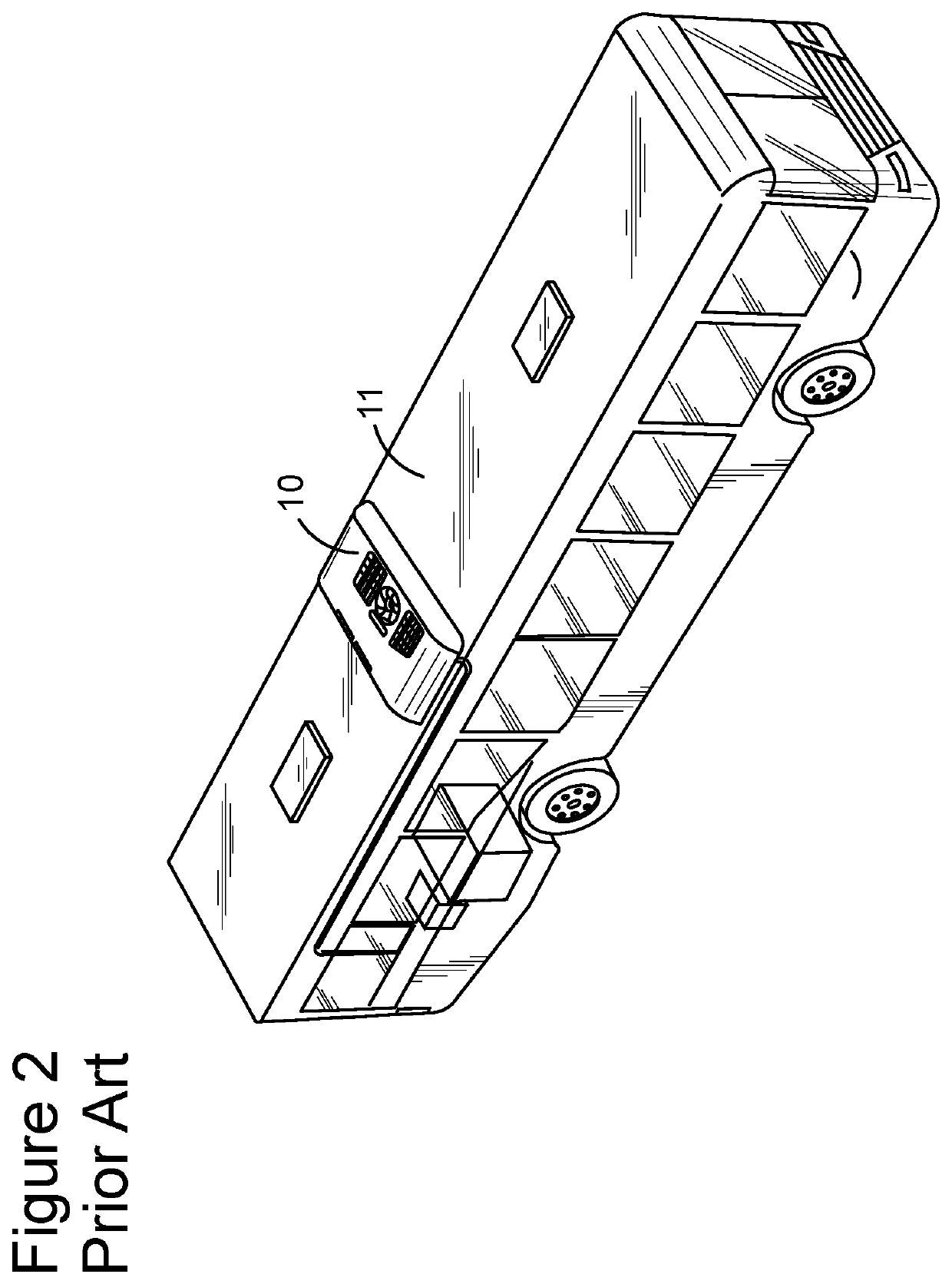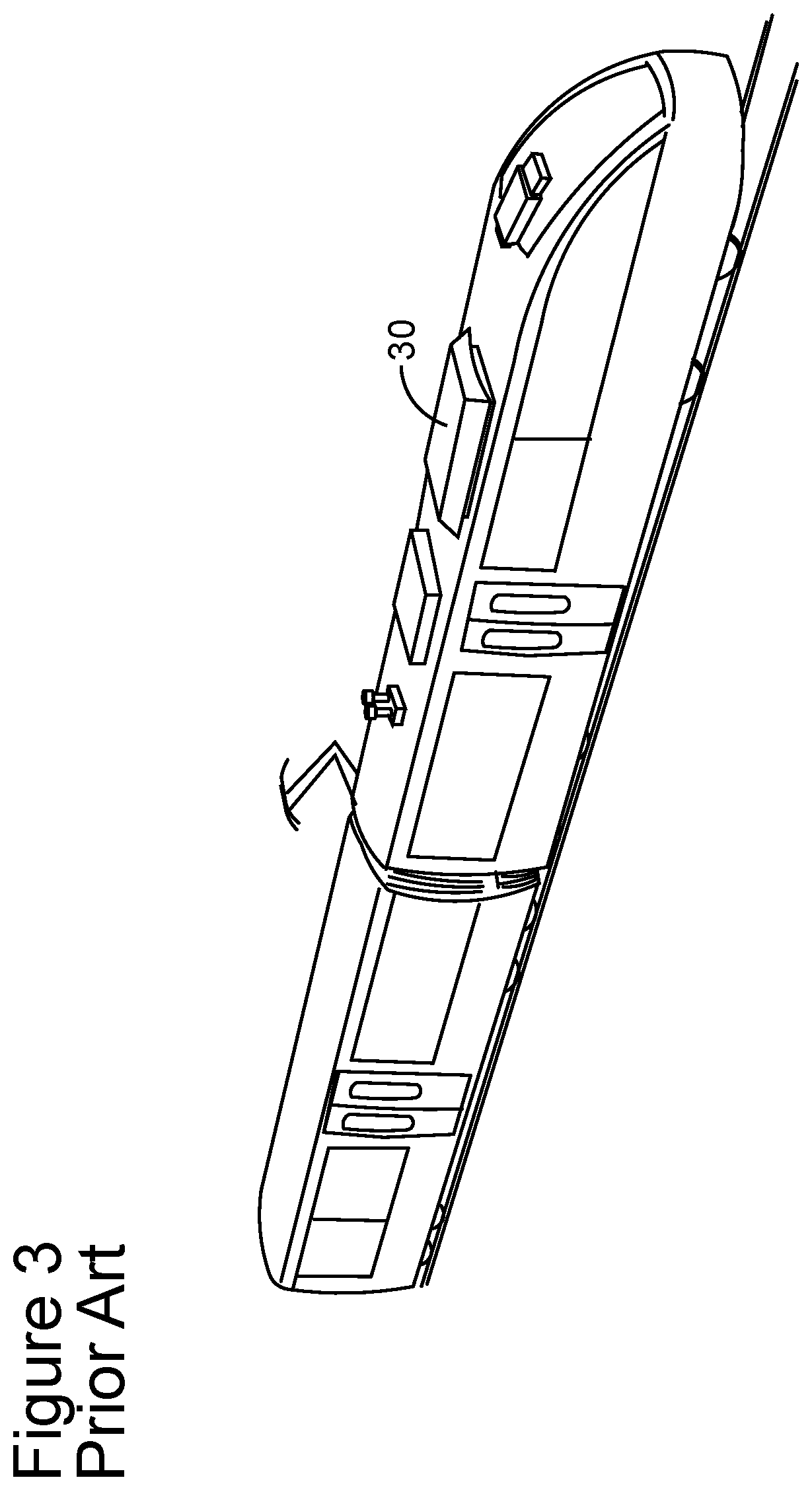Ionization air purification system for the passenger cabin of a vehicle
a technology for air purification systems and passenger cabins, which is applied in the direction of electric supply techniques, separation processes, transportation and packaging, etc., can solve the problems of no commercially available systems, adverse effects on the health of passengers, and no system specially suitable for such use, so as to minimize the ability of free electrons and minimize the production of ozone
- Summary
- Abstract
- Description
- Claims
- Application Information
AI Technical Summary
Benefits of technology
Problems solved by technology
Method used
Image
Examples
first embodiment
[0033]FIG. 5A illustrates the present invention, as implemented into the engine compartment of an automobile. As illustrated, a plenum chamber 4 is positioned within the engine compartment of the automobile, and is shown with the cover panel (not shown) removed. An air ionization device 3 having a tubular dielectric member is fixedly mounted to a sidewall of the plenum chamber 4 so as to extend into the air flow from the intake, which in the case of an automobile (as shown in FIG. 1) generally is located along the base of the windshield as that location tends to reduce the extent of the intake of pollution in the outside air. The cabin air filter 1 is shown positioned against a sidewall of the plenum chamber 4 towards the passenger cabin and a filter housing 2.
[0034]As further illustrated in FIG. 5A, the air ionization is performed using an ionization device 3 having a tubular dielectric member, but it is also contemplated that the ionization may be accomplished through other known ...
second embodiment
[0035]As illustrated in FIG. 5B, the invention is illustrated wherein the ionization device 400 has a planar dielectric member 300. Importantly, the ionization device of the present invention provides a sufficient level of ionization to effectively address the contaminants, while minimizing the production of ozone, O3, as a by-product. As illustrated, the ionization device 400 is in turn secured via a plurality of stanchions 420, 430, 440 that are mounted to a baseplate on enclosure 410 that is in turn secured to a sidewall of the plenum chamber 4 and is electrically coupled generally via hard wiring to the 12 volt system that operates in the vehicle. A control device modifies the degree of ionization by modifying the energy levels applied to the ionization tube or ionization source proportional to the change in air flow dynamics or air quality. It is preferred that planar dielectric member 300 be mounted such that it is substantially parallel to the direction of airflow to provide ...
PUM
| Property | Measurement | Unit |
|---|---|---|
| surface area | aaaaa | aaaaa |
| voltage | aaaaa | aaaaa |
| concentration | aaaaa | aaaaa |
Abstract
Description
Claims
Application Information
 Login to View More
Login to View More - R&D
- Intellectual Property
- Life Sciences
- Materials
- Tech Scout
- Unparalleled Data Quality
- Higher Quality Content
- 60% Fewer Hallucinations
Browse by: Latest US Patents, China's latest patents, Technical Efficacy Thesaurus, Application Domain, Technology Topic, Popular Technical Reports.
© 2025 PatSnap. All rights reserved.Legal|Privacy policy|Modern Slavery Act Transparency Statement|Sitemap|About US| Contact US: help@patsnap.com



